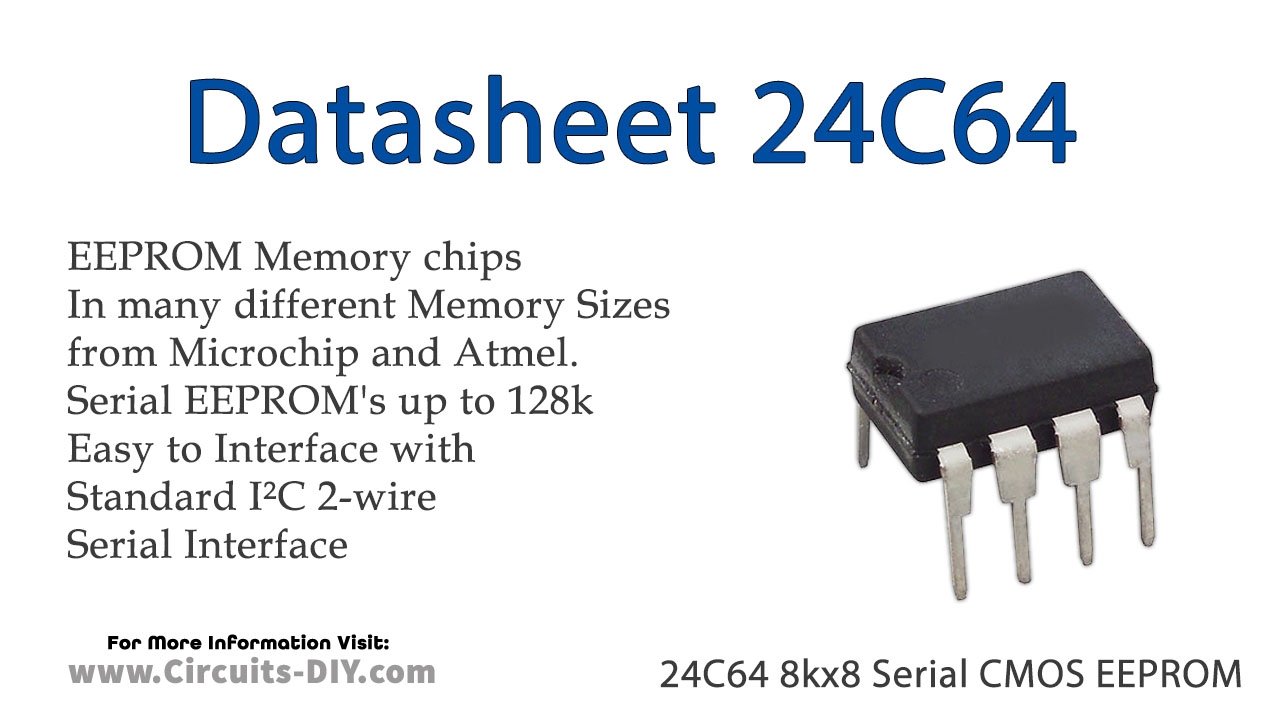What's EEPROM refers to?
History
EEPROM was developed in 1978 at Intel by George Perlegos. Being a non-volatile memory means it retains all the data even power is off and stores a large capacity of data or bits compared to EPROM. It is used as flash memories in its later version and also, to store BIOS of the computer.
Features of EEPROM
•Low and standard voltage operation (100 kHz (1.8V) and 400 kHz (2.7V, 5V) compatibility)
Schmitt trigger, filtered inputs for noise suppression
•Internally Organized 128 x 8 (1K), 256 x 8 (2K), 512 x 8 (4K), 1024 x 8 (8K) or 2048 x 8 (16K)
Automotive devices available
•Two-wire serial interface (Two wires are used to read and write data into it)
•Bidirectional data transfer protocol
Write protect pin for hardware data protection
8-byte page (1K, 2K), 16-byte page (4K, 8K, 16K) write modes
•Partial age writes allowed
•Self-timed write cycle
There are two types of EEPROM
•Parallel EEPROM
•Serial EEPROM
Parallel EEPROM:
Parallel devices are available in higher densities more then 256bits and are generally working faster.
Highly Reliable and these are mostly used for military market.
They are pin compatible with EPROMs and flash memory devices.
Serial EEPROM:
Serial EEPROMs are less dense (typically from 256 bit to 256Kbit) and are slower than parallel devices.
They are much cheaper and used in more “commodity” applications.
Advantages of EEPROM
The method of erasure is electrical and immediate.
➨It is possible to erase entire contents of EEPROM as well as particular byte as per selection.
➨It is very easy to program and erase the contents of EEPROM without removing it from board or test jig. The designers incorporate circuitry to program/erase the EEPROM in the board itself.
➨To change the contents, additional equipments are not required.
➨Electrical interfaces of different types viz. serial bus and parallel bus are available.
➨It is possible to re-program EEPROM infinite number of times.
Disadvantages of EEPROM
EEPROM requires different voltages for erasing, reading and writing the data.
➨EEPROM has limited data retention time period which is approx. 10 years for most of the devices.
➨External serial EEPROM type requires long time to access. Hence it is advisable to select appropriate EEPROM type based on application of use.
➨EEPROM devices are expensive compare to PROMs and EPROMs.
Conclusion:-
In conclusion, EEPROM and Flash are two varieties of non-volatile memory, each with special qualities and uses. In computer systems as well as microcontrollers where a little amount of data is kept, EEPROM is frequently employed. It is also employed when code updates are few, as opposed to flash memory, which excels in systems where code changes occur often. Compared to EEPROM, flash memory is significantly less expensive.


Comments
Post a Comment